Refined beauty and unpretentiousness in leaving are harmoniously combined in such graceful flower, as ampelous petunia. A spectacular representative of the flora with thin shoots and a waterfall of flowering flowers, not inferior in decorativeness to a rose, will become a wonderful decoration of any garden and courtyard.
Material Content:
Description
An ornamental plant with characteristic long shoots, covered with large flowers of a wide color gamut, makes it possible for flower growers to decorate hanging planters, flowerpots at the entrance, as well as flower beds and flower beds with the help of an original culture. Thanks to the constant work of domestic and foreign breeding institutes, today flower shops represent a wide range of various varieties of a beautiful flower.
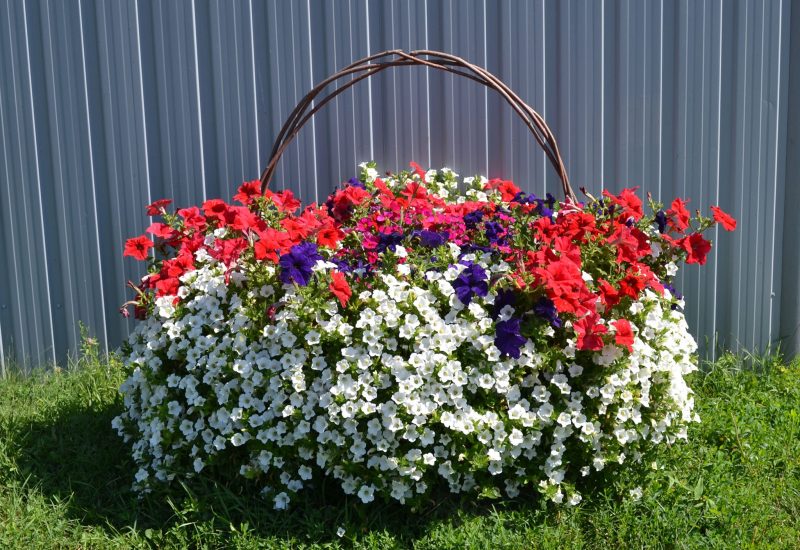
Most popular:
- “The Snow Queen” is a variety with snow-white flowers exuding a marvelous aroma and refreshing the landscape.
- "Explorer" - a representative with powerful shoots, covered with flowers of various colors, easily tolerates bad weather.
- "Mashenka" - a plant with shoots of 80 cm, which are covered with regular, short-leaf leaf plates and medium-sized pink or yellow flowers.
- Catherine is an orange hybrid with small flowers, the diameter of which does not exceed 6 cm.
- "Svetlana" is an elegant variety with flowers that stand out with pink veins and branched shoots up to 1 m long.
- “Black Velvet” - a distinctive feature of the variety is the almost black color of flowers with a diameter of up to 8 cm.
- "Ramblin Neon Rose" is a decorative large-flowered form of ampelous petunia, growing in width up to 1 meter.
Growing ampelous petunia seedlings from seeds
Since the rate of development of ampelous petunia is quite slow, it is worth growing a culture by the seedling method, which will allow you to get a flowering plant by summer.

Sowing of seeds is carried out in late winter - early spring as follows:
- The container for seedlings is disinfected and filled with a light, fertile substrate with a loose structure.
- Soil is preliminarily calcined in the oven to destroy pathogens and larvae of pests, and then it is poured with a strong solution of manganese directly in the box.
- After the soil is slightly “shaken,” the seed is distributed over its surface.
- The container is covered with glass and installed in a warm, shaded place.
- After emergence and development of 3 pairs of real leaves in them, the protective glass is removed, and the seedlings dive into separate containers, which are transported to diffused light, where they are kept until the return frosts in the garden are passed.
- During the growth of seedlings, in order to ensure lush flowering of petunias, seedlings are fed with mineral fertilizers twice a month and are systematically moistened to prevent the drying of an earthen coma.
Outdoor landing
At the end of spring, when the soil warms up enough and stable heat arrives, one should proceed with the planting of seedlings driven out at home in open ground.
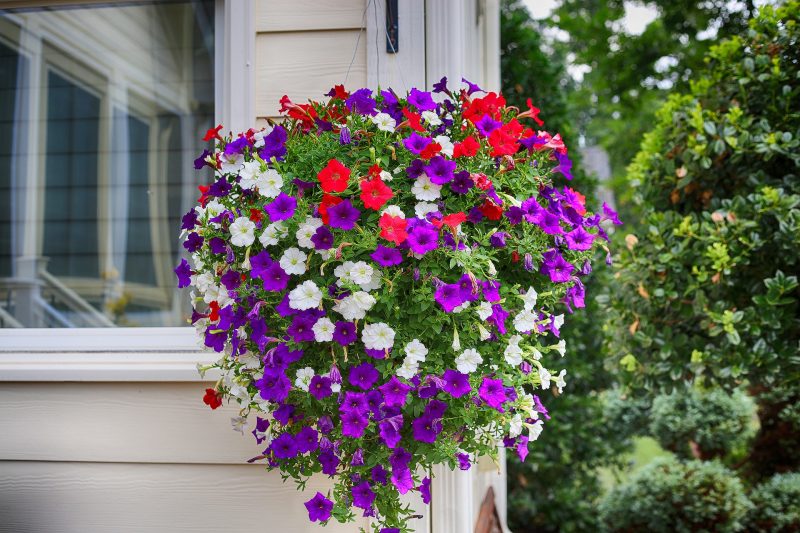
It is worth planting petunia in the evening or on cloudy days in previously prepared holes.
Landing pits with a size of 10x10 cm are dug in sunny or slightly shaded areas with a distance of 25 cm. The soil on the site should be fertile and loose with good drainage qualities. After planting the beds, it is recommended to mulch, which will help maintain the necessary moisture level of the trunk circles.
Ampoule petunia: care features
It is very simple to take care of a rather undemanding flower and this process will not cause trouble even for a beginner or non-dispositional gardener with a lot of free time.
Watering and feeding
The key to successful ampelous petunia cultivation is to ensure a high level of soil and air humidity, in which the soil will always be in a slightly moistened state. In hot summers, it is recommended to periodically irrigate the beds, thereby reducing air dryness.

To ensure abundant flowering and general attractiveness of the bushes, additional nutrition should be organized for the beautiful inhabitant of the garden. During the period of growing green mass, top dressing is carried out with a high concentration of nitrogen, which is replaced by phosphorus-containing fertilizers as buds begin to form. At the end of flowering, it is worth enriching the soil under plantings with potassium, which strengthens the immunity of the flower. In addition to root top dressing, ampelous petunia responds well to extra-root ones using liquid mineral complexes, as well as growth stimulants.
How to care for soil
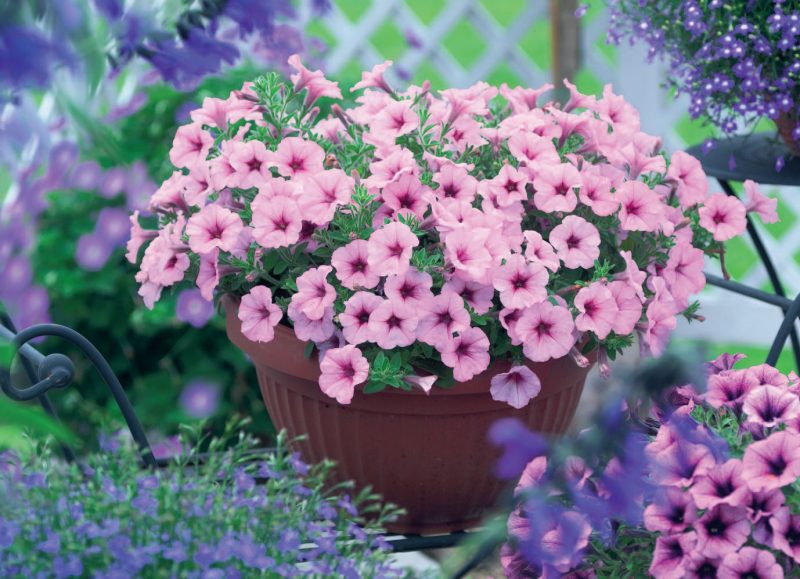
Read also:how to feed petunia
Several times during the growing season, it is recommended to loosen the beds, providing looseness of the soil and free air circulation. Covering the trunk circles with a layer of peat mulch will prevent the rapid evaporation of moisture and save time on loosening.
Trimming and shaping a bush
The formation of ampelous petunia involves the timely shortening of sprouted stems by ⅔ length, which will maintain the attractiveness of the bushes and prevent their lower part from being exposed.

Due to the fragility of long shoots of petunia under the influence of wind and rainfall, in order to maintain the decorativeness of the flower and stimulate abundant flowering, it is recommended to carry out sanitary pruning systematically, removing the injured parts of the green mass. Also, as necessary, seed bolls are cut from spectacular bushes, spoiling the overall appearance of the plant.
Do I need to pinch ampelous petunia

To increase the decorative qualities of the plant by growing in width and the formation of highly branched shoots, it is necessary to pinch the flower. In order to achieve the task and increase the number of flowers in young plants, all growth points on newly emerging shoots are removed.
Pest and Disease Control
Ampelic petunia, subject to care regulations, is rarely affected by pests and diseases. However, with too thick plantings and in conditions of systematic waterlogging on the plant, manifestations of powdery mildew and gray rot can occur, the spread of which occurs very quickly. At the first symptoms of diseases, the affected parts of the shoots are removed and burned, and the remaining plantings are treated with systemic fungicides that prevent the further development of pathogenic fungi.
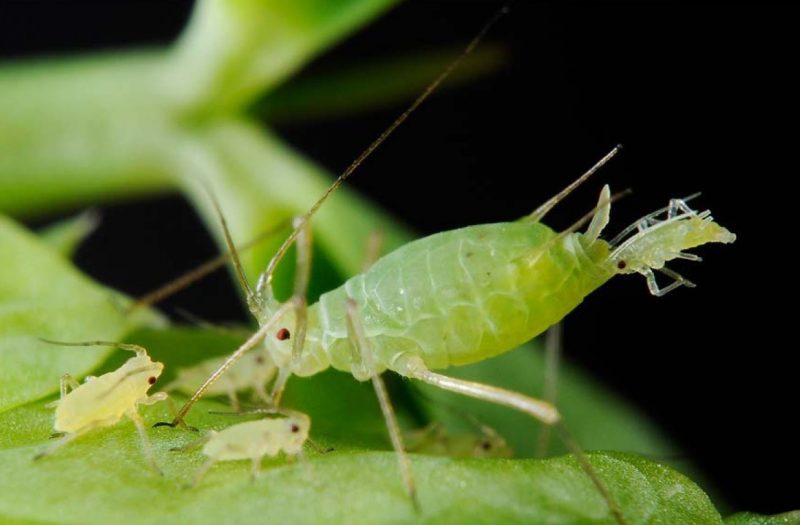
Among the pests, aphids, thrips and spider mites populate the flower at low humidity. To prevent attacks, sprinkling of petunias should be organized. But if harmful insects are already marked on the plant, you should immediately treat the beds with an insecticide according to the manufacturer's instructions indicated on the package.
How a flower propagates
In addition to the seed method of reproduction, which is distinguished by its laboriousness and duration, ampelous petunias, being perennials, can be propagated by the vegetative method.
With green cuttings:
- Cuttings are cut from ripened shoots 5-6 cm long, from the bottom of which all foliage is removed.
- Individual pots are filled with a substrate of peat and sand.
- Cuttings are buried in the prepared soil and watered with a growth stimulator.
- Rooting, in which the cuttings are under protective caps, occurs after 4 to 8 weeks.
- During the entire period of planting, they are moistened and ventilated.
Growing in a cache-pot
Hanging flower pots are very often decorated with ampelous petunias with bright colors that allow you to maintain the decorative appearance of the plates for a long time. However, due to the tendency of petunia bushes to grow and thicken, which can cause the development of diseases and loss of attractiveness, the grower must know exactly how many bushes to plant in one bowl. The key parameter in calculating the number of pieces is the pot size.
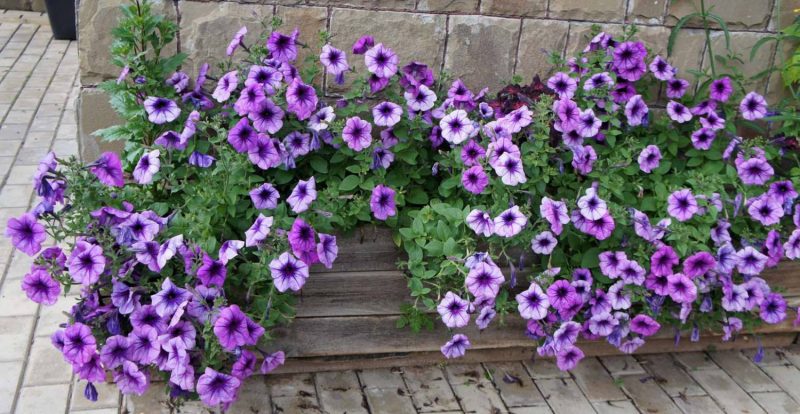
In order for a bowl with a diameter of 30 cm to be a spectacular decoration of the garden, it is enough to plant 2-3 copies of the ampel beauty in it.
Ampoule petunia is a beautiful flower with long and lush flowering, which, subject to simple care procedures, will decorate the garden with bright colors for a long time.












